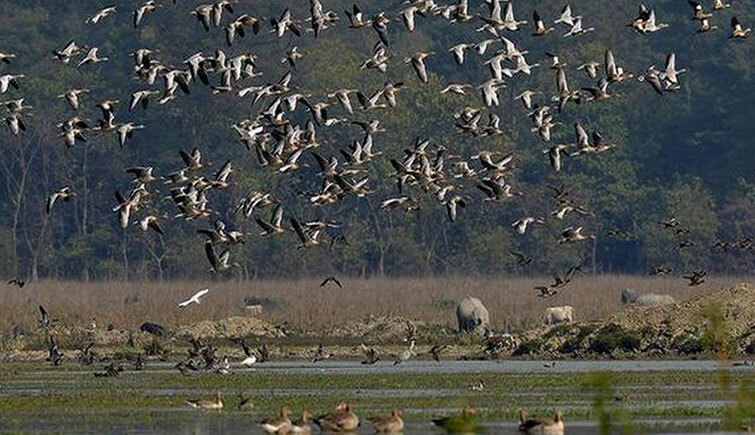
13 Jan, 2020
96 Species of Wetland Birds Recorded in Kaziranga
Kaziranga National Park, a UNESCO World Heritage Site, has added another feather in its cap as it has recorded 96 species of wetland birds, as per the second wetland bird count conducted by officials of the park and avian specialists. Kaziranga, which is already famous for being home to the largest population of one horned rhinoceros, also receives one of the highest number of tourists among other wildlife parks and sanctuaries in India.
Details of the bird count conducted recently in Kaziranga
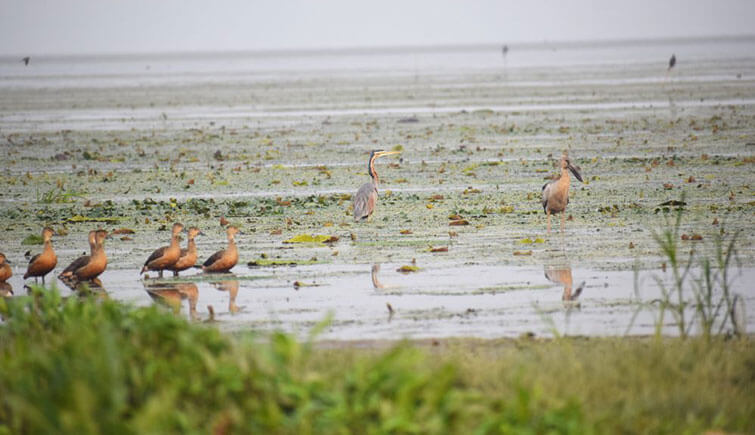
The teams which conducted the second wetland bird count, counted a total of 19,225 birds belonging to 96 species of 80 families. The first wetland bird count, conducted in 2018, revealed a total of 10,412 birds covering 80 species under 21 families.
Ramesh C. Gogoi, the Divisional Forest Officer of the park, gave details of the wetland birds covered in the survey, saying, “With 6,181 individuals, the bar-headed goose led the species count, followed by the common teal at 1,557 and northern pintail at 1,359. All three belong to the family anatidae.” He also added that the survey was conducted in four ranges of the park: Agoratoli, Bagori, Kohora and Burapahar.
Here, it is interesting to know that more than half the birds (9,924) and 85 of 96 species were recorded in Agoratoli Range of the park. The main reason behind this is that Sohola, the largest of Kaziranga’s 92 perennial wetland, falls in this range. Gogoi also said, “Not surprisingly, more than 34% of the birds counted were found in Sohola.”
Other species which are present in significant numbers in the Kaziranga National Park include common coot, gadwall, Indian spot-billed duck, lesser whistling duck, ferruginous duck, tufted duck, northern lapwing, spot billed pelican, ruddy shelduck, little cormorant and Eurasian wigeon. The survey was carried out by dividing the bird roosting areas into blocks, while trying to keep the counting errors to a minimum.
Commenting on the importance of such surveys, Rabindra Sarma, the park’s research officer, said, “Data on avian wealth is important because the wetlands nourish Kaziranga's ecosystem. Increase or decrease in the number of birds is indicative of the park's health.”
First wetland bird survey conducted in 2018
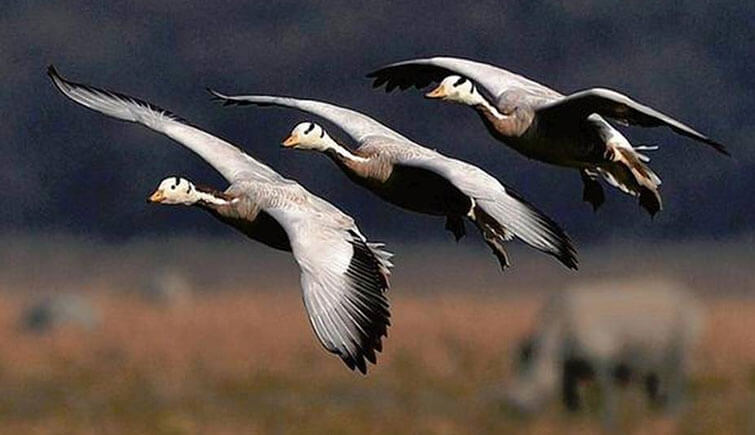
The first wetland bird survey, which was conducted in 2018, had revealed that the park was home to 10,412 birds from 80 species belonging to 21 families. The survey was conducted in 19 places which were fed by 8 water bodies.
Several species of rare birds were also sighted during the survey, some of which included critically endangered red headed vulture, greater spotted eagle, woolly necked stork and swamp francolin.
The census had also revealed that Kaziranga was home to 2,413 rhinos and approximately 1,100 elephants. The tiger census conducted in 2014 showed that there were 103 tigers in the park. According to the latest tiger census, there are 104 tigers in Kaziranga National Park.
Some facts about Kaziranga National Park
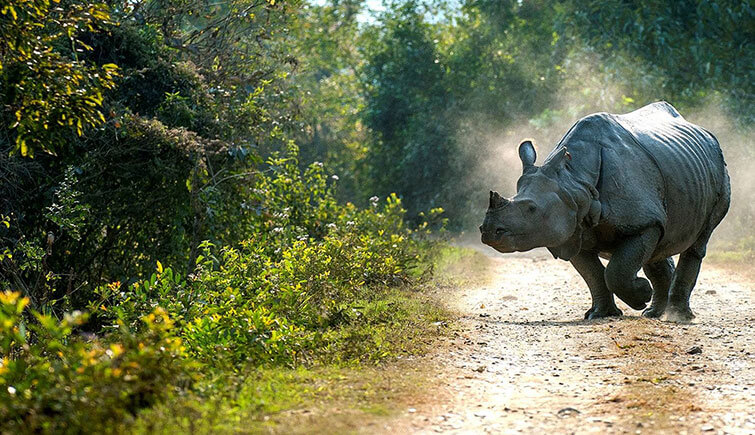
- Kaziranga National Park has a total area of 1,030 sq km, with a core area of 430 sq km.
- There are more than 250 seasonal water bodies in the park, including the River Dipholu.
- More than 9 of the 14 species of primate found in the Indian subcontinent are located in Kaziranga.
- At 2,413 rhinos, Kaziranga boasts the world’s largest population of one horned rhino.
- Kaziranga has the highest density of Royal Bengal Tigers in the world.
- More than 60% of India’s wild buffalo population is found at Kaziranga, along with 7 species of turtles and tortoises, and the only population of Eastern Swamp Deer.
- 25 globally threatened and 21 near threatened species of birds are found in Kaziranga National Park, with more than 60 species of fish having been recorded.



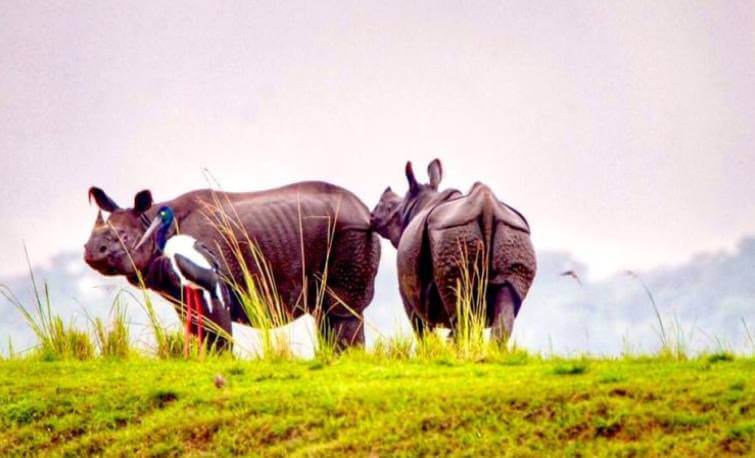
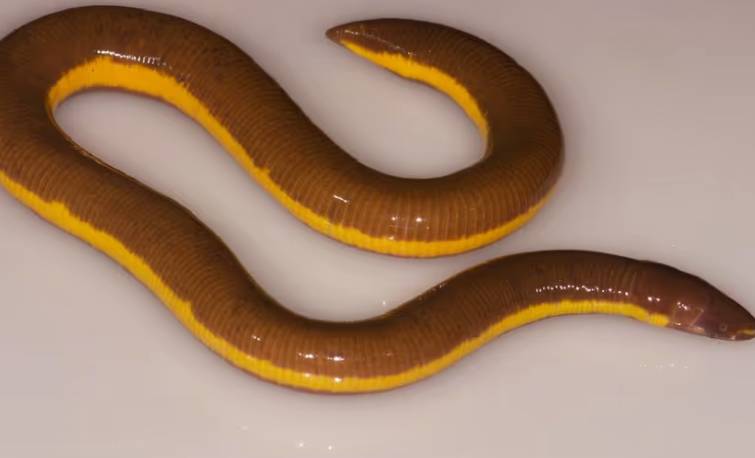
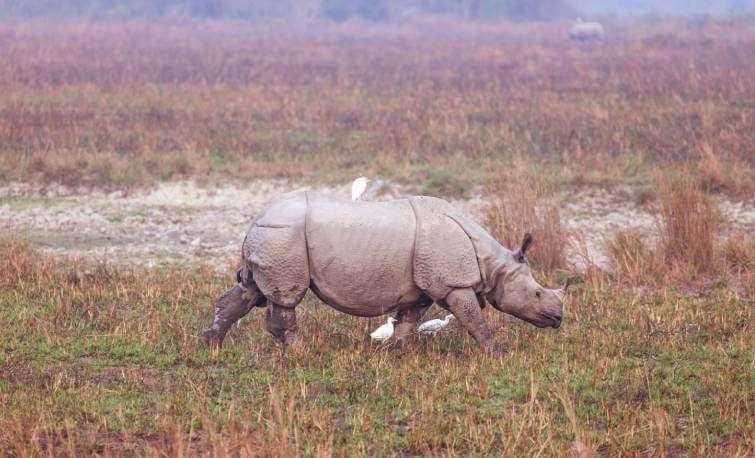




 Share
Share Home
Home Packages
Packages Book Now
Book Now